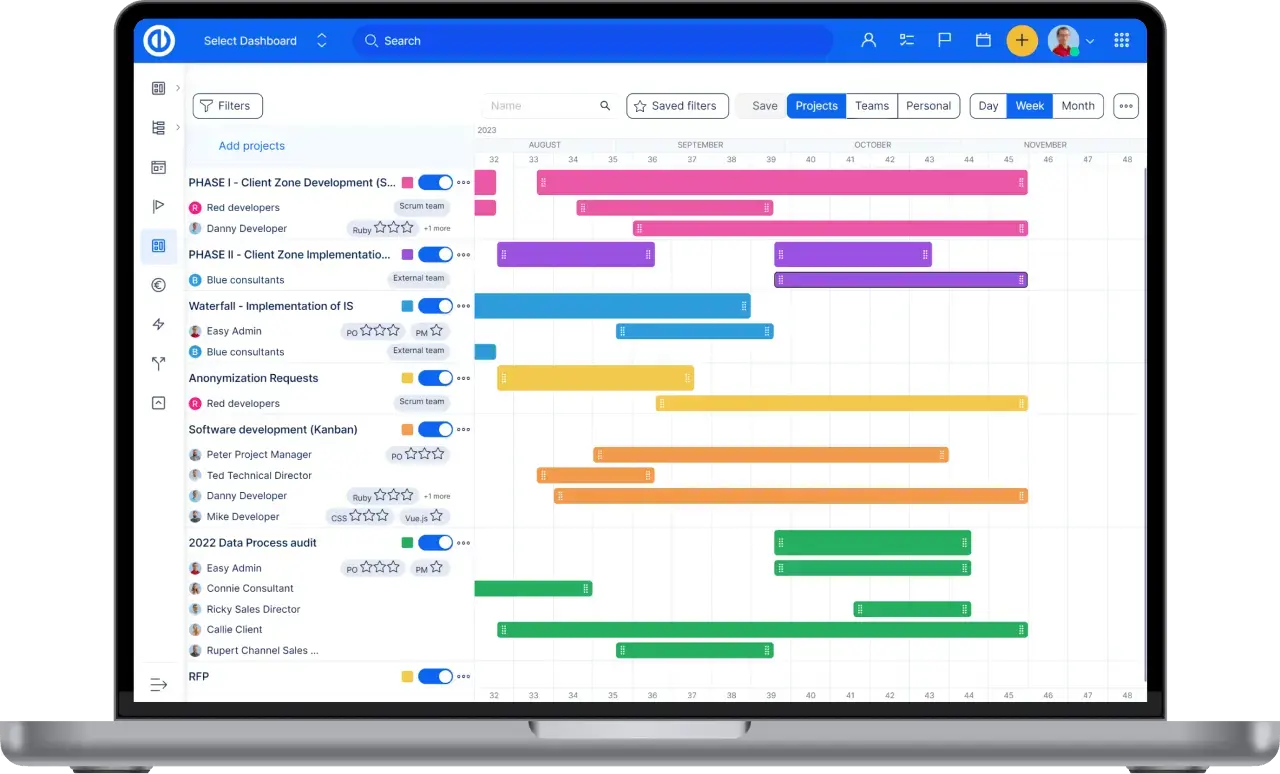Why Project Managers Should Be Leaders in Communication
Across the web, you will find hundreds of articles on communication between the team members working on a project. However, in this piece of advice, we will keep you out of the general definitions and rather skip directly into how to respond to communication challenges that daily project management brings to you and your team.

Challenge #1 – Communication leadership
As a project manager, you have to take the role of a communication leader. Reason: you are the only person being in touch with everyone on the team – meaning, most probably there are “unexisting communication channels” between some team members (eg. a print house studio—copywriter | UX/UI designer—hardware provider | interior designer—AC supplier).
There is a popular 7Cs definition of communication that says communication should be clear, concise, concrete, correct, coherent, complete, and courteous. You will decrease the probability of miscommunication by following these 7Cs in your outputs but at the same time, you should not expect other team members to follow these principles too.
As a communication leader, do not get yourself trapped in becoming the “Head of Complaint department”. Our good advice is: if there is something unclear between the team members, solve it quickly by organizing a common meeting or an online call. Sometimes, it is better to let people from different river banks create the bridge than become the bridge yourself.
“If you are in between an argument of two subjects on your team,
organize a common meeting/call to solve it as quickly as possible.“
Challenge #2 – Means and organizing of communication (especially for 3+ teams)
In our article about setting up the rules for the home office, we suggested 6 means of communication that make project management smooth and people on the team happy and effective – Call, Scheduled online call, Chat, Group chat, Shared calendar, and a project management tool. Not much has changed since then (except that we now have a great intuitive Easy Project mobile app) and these rules are valid for in-house full-time, remote, or combined cooperation between the team members. But still, be careful – it is crucial to set up the rules of in which case to use which of these channels.
Challenge #3 – Communication as a motivation to motor up the project's progress
Using soft skills does not only mean telling people they have done a good job (although it is important, too). Let's dig deeper:
1. Inform your team. Imagine this as a daily newspaper keeping everyone on the team up to date. Find your time (and an appropriate communication channel for such a sum-up, eg. e-mail or a group chat) to let your people know what has been accomplished during the day. It is a quick and intelligent way how to keep the optimistic momentum and let people feel that the project is moving forward. Motivation/funny/serious tone of voice (and illustrations) are up to you.
“After each sprint, show people what you have completed
– keep the momentum by keeping everyone on the track.“
2. Empower people to speak. One of the easiest but often forgotten tricks to involve people in a discussion is asking them their opinion on what they have just heard. Direct your question towards a specific person to avoid the quiet moments when everything seems perfect and later your mailbox gets filled with unwanted notes. Many issues can be solved and avoided by a quick face-to-face (or online) discussion between the team members.
3. Show your team what is going on. Numbers and data speak too. What is more, it is a language that only hardly can be doubted. From time to time, invite your team and/or stakeholders and clients for a little presentation. Get coffee and snacks and show them your world – the project's progress in visual and colorful graphs and stats. It helps them see the project from another perspective and also it helps you since people will have it easier to imagine what actually is your job (not everyone knows, trust us!).
Challenge #4 – General improvement of the communication in agile teams
It has to do a lot with the first and the second challenge; give it rules. People simply need to be guided, even when it comes to communication. Consciously or subconsciously they rely on your leadership and you have to arm it with rules, communication channels, and, yes, soft skills too. Also, let the PM features speak for themselves – share the project's Gantt Chart with your team as well as the WBS from the very first brainstorming or kickoff meeting.
Conclusion
There are several tips and tricks for good communication in general but project managers just should not expect all their team members to follow them. Therefore, it is up to you to bring in and keep on the good communication manners and have them supported by technology – especially by a solid, modern, and visual PM software with features for better communication. Ask and empower others to speak. Already during the first brainstorming, explain to everyone that their opinion matters. Everyone knows that the better the communication, the better the job.

All-in-one software for a modern project manager? Easy.
Get all powerful tools for perfect project planning, management, and control in one software.
